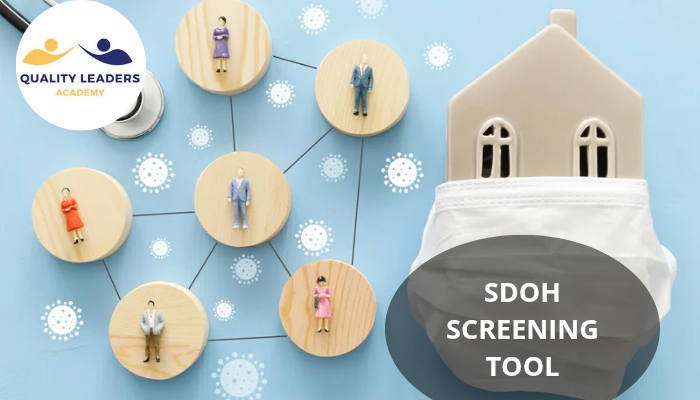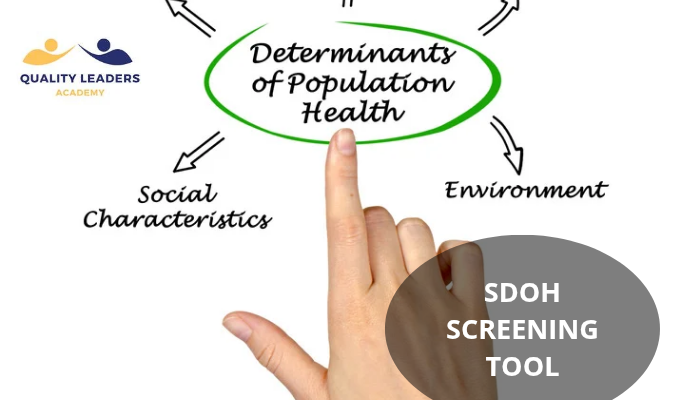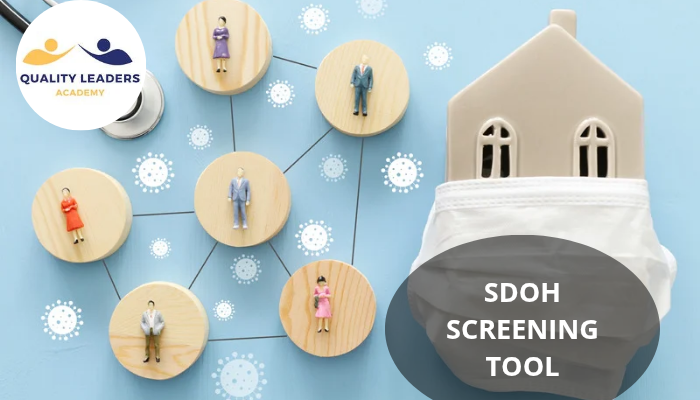The SDOH screening tool is transforming how we approach healthcare, shifting the focus from treating illnesses to understanding the root causes of poor health. Imagine walking into a clinic not just to talk about symptoms but to be heard as a whole person. Your struggles with transportation, housing, or affording food are no longer side notes; they become essential parts of your care. Screening for SDOH reveals how deeply social factors shape patient outcomes.
WHAT IS AN SDOH SCREENING TOOL?

SDOH screening tools may appear simple, yet they have the power to shift the course of a patient's care journey. It asks questions about basic but critical needs:
- Do you have a safe place to sleep?
- Do you worry about running out of food?
- Can you get to your doctor’s office easily?
These questions open doors to conversations that many patients have never had in a medical setting. Instead of focusing solely on test results or medications, the provider now sees the patient’s full picture. Whether it’s the CMS’s Health-Related Social Needs (HRSN) screening tool or Oregon’s social needs assessments, these tools give providers a framework to connect care with real-life challenges
WHY IT MATTERS TO PATIENTS?
We know that health is shaped by the world we live in. According to the American Academy of Family Physicians (AAFP), nearly 80% of our health outcomes are shaped by social and environmental conditions.
That means our ZIP code can matter more than our genetic code. But what happens when those factors go unspoken and unaddressed?
That’s where SDOH screening tools become essential. A patient struggling with food insecurity might not respond well to a strict dietary plan. Someone living in an unsafe home environment may miss follow-ups out of fear or lack of transportation. These stories are not rare; they’re common, and SDOH tools help bring them to light.
HOW HEALTHCARE TEAMS USE THESE TOOLS
In practice, a nurse or care team member might offer the screening during a visit. Whether it’s a paper form, a digital screen, or just a heartfelt conversation, the method doesn’t matter as much as the message; it’s about understanding the person behind the patient. The key is that it becomes part of routine care, not an extra step. Responses trigger real action, like:
- Referral to a food pantry.
- Connection to housing services.
- Help with applying for transportation programs.
Studies like the one by Gottlieb et al. in the Journal of General Internal Medicine show that these tools work best when they’re part of a broader care coordination effort, not just one-off checklists, but a system that listens, tracks, and follows through.
BENEFITS FOR PATIENTS AND THE HEALTHCARE SYSTEM
When healthcare acknowledges social needs, everyone benefits. Patients feel heard and respected. Providers deliver more effective treatment plans. Emergency room visits drop. Readmission rates decline. And health systems can target their resources where they’re needed most.
Most importantly, people get the help they didn’t know they could ask for.
THE HUMAN SIDE OF HEALTHCARE QUALITY
This is where the conversation connects with healthcare quality professionals, and specifically, those pursuing the Certified Professional in Healthcare Quality (CPHQ) credential. As healthcare evolves, quality improvement isn’t just about safety checklists or performance metrics. It’s about equity. It’s about meeting patients where they are.
Understanding and using SDOH screening tools gives quality professionals powerful insight into the broader factors shaping patient care. These tools help teams identify gaps, reduce disparities, and build systems that support everyone, not just those with access and privilege.
For those looking to grow in this space, taking a CPHQ course can be a turning point.
One trusted provider is Quality Leaders Academy, which offers comprehensive CPHQ courses aligned with NAHQ standards. Their courses don’t just prepare you for the CPHQ exam; they immerse you in the real-world applications of quality, including the use of SDOH data to inform strategy and drive equity.
Common Questions People Ask
Do all clinics use SDOH tools?
Not yet, but the number is growing. With support from CMS and state health agencies, many health systems are adopting these tools as part of value-based care.
Are patients comfortable answering these questions?

That depends on how the questions are asked. When done respectfully and with trust, many patients are eager to share. It often feels like the first time someone truly sees them.
Can one tool cover everything?
No tool is perfect, but many cover core domains like housing, food, utilities, transportation, and safety. It’s about starting the conversation and connecting the dots.
Finally, the SDOH screening tool reminds us that health is more than a diagnosis; it’s about life. It’s about whether someone can afford dinner, sleep safely, or get to their follow-up appointment. These aren’t soft topics; they’re critical to real health outcomes.
By bringing these issues into the exam room and making them part of the care plan, providers can build trust and create better outcomes. For healthcare professionals, especially those invested in quality, like CPHQ candidates. It’s an opportunity to lead with empathy and make meaningful change.
Whether you're designing systems, coordinating care, or just starting your journey into healthcare quality, tools like these are your compass. And if you're ready to deepen your expertise, a course with Quality Leaders Academy could be the next step in transforming your approach, from treating symptoms to understanding stories.
Resources:
https://www.aafp.org/pubs/fpm/blogs/inpractice/entry/social_determinants.html
https://pmc.ncbi.nlm.nih.gov/articles/PMC7864106/
https://www.cms.gov/priorities/innovation/files/worksheets/ahcm-screeningtool.pdf
https://www.oregon.gov/oha/hpa/dsi-tc/pages/social-needs-screening-tools.aspx


